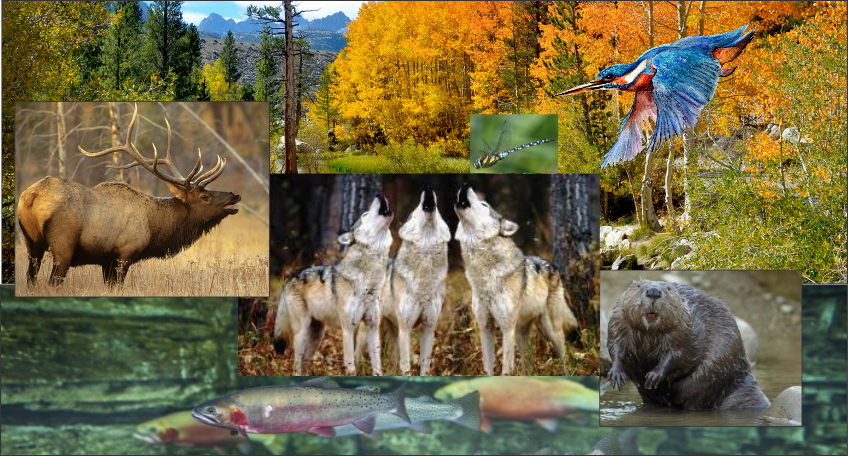



Contrary to the beliefs of people who dismiss wolves as vicious killers, wolves do play vital roles in the ecosystem. After wolves were reintroduced to Yellowstone National Park, Wyoming scientists found that aspen and cottonwood groves recovered not because wolves were killing all the elk, but because elk stopped standing around grazing like domestic livestock.
Similarly, wolves, by preying on elk and moose populations, have helped willow and fir groves to recover in other parts of the US and Canada. Willows, aspens, and cottonwoods all grow in fragile stream areas, which are extremely sensitive to over-grazing.
Now that the elk are not eating the trees to the ground, beavers have become more common in Yellowstone. The beavers create more ponds, which provide habitat for streamside trees, which creates more habitats for nesting birds, and so on. This is what ecologists call a "trophic cascade", where one organism can create cascading effects in a complex ecosystem.
Contrary to the fears of hunters, wolves do not seem to cause significant declines in elk or deer populations.
A recent study by Chris Wilmers, a UC Berkeley doctoral student, and Wayne Getz, a UC Berkeley professor of environmental science, policy, and management found another important trophic effect of wolves on the ecosystem. Like many predators, wolves do not eat their entire kill. Unlike grizzlies or cougers, though, wolves leave the remains of their kills behind. This makes wolf kills available for many species of scavengers, ranging from bald eagles to coyotes.
Without wolves, scavengers are largely dependent on harsh winters to provide food. Global warming makes harsh winters rarer. Now that wolves live in Yellowstone again, however, wolf leftovers provide a steady food source throughout the winter for scavengers.

Figure 4. Beaver carrying twigs in Yellowstone National Park. Since wolf reintroduction in Yellowstone, beavers have had more trees for food and shelter, and their population has increased. Courtesy of NPS/Jim Peaco.
"When wolves are around, you no longer get this boom-bust cycle in carrion availability," said Wilmers in a recent UC Berkeley press release.
"We're finding that ecosystems that have lost a keystone predator may exhibit less resilience to the impact of climate change," added Getz. "Because wolves ameliorate the effect of weather, the scavenger community will be better able to adapt to changing conditions."
Wilmer, Getz, and other researchers had previously compared wolf leftovers to leftovers from human hunters. They found that hunters tended to concentrate their efforts at the end of winter, while wolf kills occurred relatively regularly.
"For a long time, people thought that human hunting was a surrogate for large carnivores," said Douglas Smith, chief scientist of the Yellowstone Wolf Project in a 2003 UC Berkeley press release. "This line of research clearly shows that that's not true. Human hunting is not the same as having wolves in the ecosystem."

Link to complete article
Restoration or Destruction: The Controversy over Wolf Reintroduction